Simazhuang Village: Sign a contract to grow vegetables at work and bid farewell to getting up in the early morning.
Editor’s note:Now when it comes to rural revitalization, everyone loves to mention "one village, one product" and hopes that the countryside will develop its own characteristics. In this sense, Simazhuang Village in Qingxian County, Cangzhou City, Hebei Province can be said to have brought its "characteristics" to the extreme. The special food industry here has become the "golden business card" of Hebei Province, and it has been constantly innovating and leading for 23 years, driving 6,000 villagers in the village to become rich.Nowadays, the rural professional cooperative mode, brand management ideas, leisure farm construction and vegetable variety selection here have strong reference significance.

Qingxian County, Cangzhou City, is a big county of vegetable production in Hebei Province, but in Qingxian County, everyone knows "Fu" and vegetable feast, which are the characteristic vegetable brands of Sima Zhuang Village, and the small village has a national well-known trademark. In fact, even in the big cities of Beijing, Tianjin and Hebei, many special vegetables are supplied here, including peony cabbage, thumb cucumber, cherry tomato … more than 500 kinds of special vegetables and new varieties of fruits and vegetables, which constitute the most complete variety of special vegetables in Hebei Province. In terms of planting selection, most of the varieties selected locally are varieties with novel taste but relatively low yield, "not pursuing yield, only caring about quality".
There are two kinds of farmers in the village. One is to "work" in the park and get paid monthly for eight hours of work, and the other is to "sign up for vegetables". As long as the vegetables meet the requirements of the cooperative, the purchase price will be better than the general market price. In Sima Zhuang village, everyone’s life is very practical and very exciting.
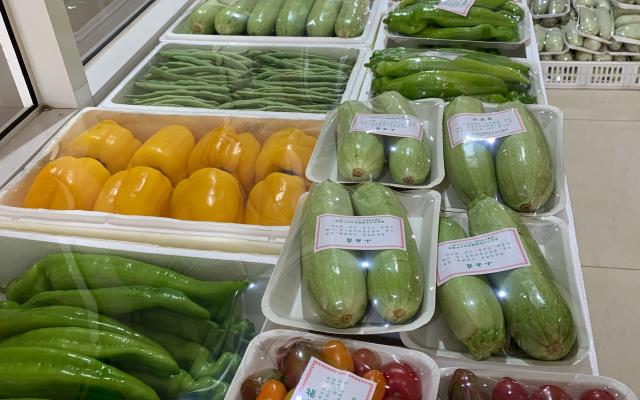
There are more than 500 kinds of excellent vegetables in Simazhuang village. Beijing News reporter Yang Yijing photo
"Food in Qingxian shed in the morning, food on the table in Beijing and Tianjin at noon"
In the past many years, at 2: 00 or 3: 00 in the morning, perhaps many city people who like to stay up late just fell asleep, but some farmers in Simazhuang village have already got up, and they have taken baskets of vegetables picked from the greenhouse the night before to the largest vegetable market in Shili County, in order to sell them at a good price.
As a big vegetable county, Qingxian County has no shortage of vegetables. Local vegetable vendors and restaurants that collect vegetables only like the freshest vegetables of the day. If they go late, the selling price will be greatly reduced immediately, and they will also face the risk of unsalable sales. Therefore, villagers will always fly to the county seat by Dai Yue. After successfully selling the vegetables, the farmers rushed back to the village and continued to work in the fields at dawn.
This used to be the most common day for farmers in Simazhuang village, and the days of getting up early and selling in the dark were day after day.
"In the morning, there is a dish in the shed in Qingxian County, and a meal on the table in Beijing and Tianjin at noon." Qing County, Cangzhou City, Hebei Province, is located more than 150 kilometers southeast of Beijing, close to Tianjin, where the Beijing-Hangzhou Grand Canal flows. Farmers here have a tradition of growing vegetables for a long time in history, and Qing County is also a famous vegetable production place in Hebei Province.
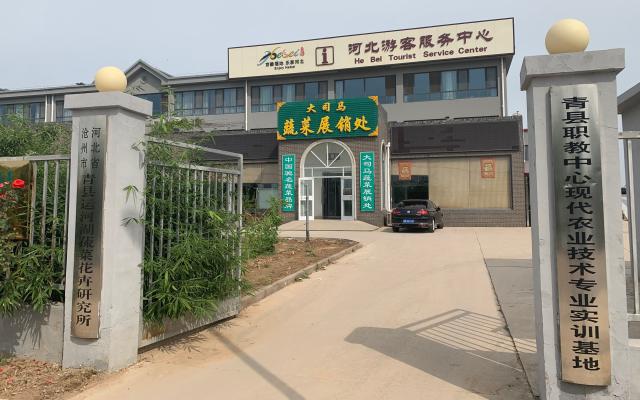
Qingxian county fu vegetable exhibition office. Beijing News reporter Yang Yijing photo
Nowadays, the villagers in Simazhuang Village basically bid farewell to the vegetable market, and they don’t need to rush to the county town 10 miles away in the middle of the night. They just need to deliver the vegetables to the modern agricultural park in Sima on time according to the requirements of the village cooperatives. All these changes come from the development of village cooperatives.
From raising pigs and planting fruit trees to planting special dishes.
In the late 1980s, Liu Jicheng, a veteran, came to Simazhuang Village in Qing County, Cangzhou City, Hebei Province as the village secretary. Although this village is 5 kilometers north of Qingxian County, its economic and geographical conditions are good, but its economic development is very ordinary.
At that time, Qingxian’s vegetable productivity was already very strong, and it was a big county supplying vegetables in Beijing, Tianjin and Hebei. There are more than 1,200 mu of land in Simazhuang village, all of which are collective land. Liu Jicheng, the village secretary, wanted to develop the collective economy and let everyone get rich together. At that time, he deliberately left 600 mu of land during the village construction, hoping to develop some of his own characteristic industries with the help of the location advantage close to the county and Beijing and Tianjin.
The vegetable industry is developing well in Qingxian County, which can be located in Simazhuang Village, a big vegetable county. If we continue to grow vegetables, the advantages are not obvious, and the price of ordinary vegetables fluctuates greatly, and the income is not stable. Liu Jicheng is thinking about doing some other industries.
On balance, the village first began to use collective land to develop farms to raise pigs, but the economic benefits of raising pigs were not optimistic because of the great fluctuation of market conditions. Later, the village began to plant fruit trees, and achieved certain results. However, Qingxian County, located in the inland area of North China Plain, has a small temperature difference between day and night, and the climatic conditions are average. The apples and other fruits produced are not as delicious as those in Jiaodong and Northwest China, so it is not competitive.
In the 1990s, the variety of vegetables on people’s dining tables was far less abundant than it is now. When dining in the restaurant of Simazhuang Village, you can only eat common vegetables on the market, such as cucumbers, tomatoes, Chinese cabbage, peppers, etc. In the northern region, the variety of vegetables was quite limited at that time. It was also at this time that Liu Jicheng came into contact with the special food industry. At that time, the restaurant serving the furniture city next to the village had a good business. He felt that he might as well develop some special vegetables, which would not only enrich the dining table, retain old guests, but also promote the development of a new industry.
With this idea, Sima Zhuang village began to plant special dishes in 1996. At that time, no one could have imagined that small special dishes would achieve such a huge scale later.
For more than 20 years, he has been at the forefront of "special dishes" in China.
"At the beginning, the acceptance of special dishes was not high, and it was difficult to develop." Li Zhibin, general manager of Sima Zhuang Lvhao Agricultural Cooperative, said that in the early years, people knew little about special dishes, and their acceptance was low. Only a few people were willing to try fresh dishes that were expensive and had never been seen before.
With the rising consumption level, the turning point came quietly. Since 2003, the market has received more and more special dishes, and the special dishes in Simazhuang Village have ushered in a period of rapid development. Up to now, the planting facilities in the modern agricultural park of Sima have an area of about 1280 mu, and there are different vegetable varieties all year round. The park has introduced more than 500 new varieties of excellent vegetables, fruits and vegetables, such as peony cabbage, spore cabbage, thumb cucumber, emerald cherry tomato, Zi Xia fairy radish, bergamot cauliflower and golden flying saucer.
With the passage of time, the types of special dishes are also changing. Today, many early special dishes are not surprising. How to continuously maintain the characteristics of vegetables in the park? More importantly, any special dish has different planting requirements from popular dishes. How to ensure it technically? At this point, Sima Zhuang village went ahead early again. The modern agricultural park of Sima here has successively established cooperative relations with agricultural research institutions such as China Academy of Agricultural Sciences, China Agricultural University and Hebei Agricultural University, and set up professor workstations and teaching areas. Teachers and students teach, experiment and practice here, while the village has received continuous technical support.
The cooperation between China Agricultural University and Simazhuang Village began in 2011. A calligrapher in the village often goes to Agricultural University to participate in activities. Through this relationship, the cooperative found Professor Ren Huazhong from the College of Horticulture of Agricultural University. "The special dishes grown in the village are delicious, but it is impossible to eat them every day. I hope to add some new varieties."
Later, Professor Ren Huazhong came to Simazhuang Village. After on-the-spot investigation, he reached a cooperation with Simazhuang Village and established a professor workstation in the village. "Agricultural University has more than 70 professor workstations in the country, and this is the only one that has established workstations in the village collective. Others are built at the county or municipal level."
Since 2011, Agricultural University has tried to plant four or five hundred new varieties in the park of Simazhuang Village, including tomatoes and peppers. "A while ago, we introduced a southern vegetable called potato to the base. It tastes crisp and sweet, and it is rare in the north." Ren Huazhong, a professor at China Agricultural University, said that some time ago, a customer from Tangshan, Hebei Province, after tasting the potato, immediately made a decision to buy it. For this customer, he bought 140,000 yuan of potato in the village.
In fact, Ren Huazhong, who has been in the village for many times to investigate and give advice on agricultural science and technology, studies cucumbers. In recent years, there are hundreds of kinds of cucumbers planted in Simazhuang village. Cucumber may be ordinary, but some new varieties are rare in the north and even the whole country. Now the most popular in the market is thumb cucumber, which tastes crisp and refreshing. Now it often appears in high-end food stores in Beijing and Tianjin, and the selling price is not low.
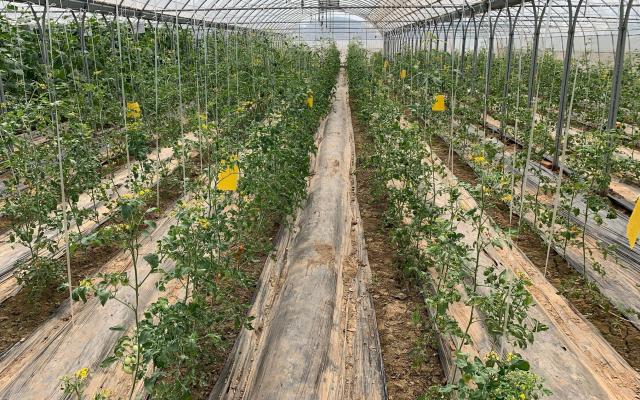
Simazhuang village vegetable garden. Beijing News reporter Yang Yijing photo
With the help of technology, the park has also realized the multi-season listing of vegetables. For example, garlic was originally harvested in the open field in June every year. Through agricultural technology, Simazhuang Village made fresh garlic go on the market during the Spring Festival. "A garlic at that time can earn a lot of money, and the output value of a greenhouse has reached more than 300,000 yuan."
Sign a contract to grow vegetables at work and bid farewell to getting up in the early morning.
In 2004, Jia Yufeng, a villager in Simazhuang village, had a piece of land at home. She and her family planted fennel in the greenhouse to make a living. Seeing that the fennel is growing well in the harvest season, Jia Yufeng estimated that it could fetch a good price, but there was a strong wind. Now that 15 years have passed, Jia Yufeng still hates that strong wind. "I have never seen such a strong wind, and I have smashed all the greenhouses at once. We have worked hard for a year for nothing."
Agricultural production was greatly affected by the weather, and the strong wind blew away Jia Yufeng’s greenhouse and the income of the whole family. When Li Zhibin, the manager of the cooperative, heard about it, he came to Jia Yufeng’s house and asked her to work in the cooperative. Jia Yufeng quickly agreed.
Today, 51-year-old Jia Yufeng has been working in the cooperative for 15 years, mainly responsible for managing the greenhouse, with a fixed working time of 8 hours every day. "The main thing is to manage pumpkins, tomatoes, cucumbers and wild vegetables in the greenhouse, which is close to home and will be home in a few minutes." Jia Yufeng rides an electric car to and from work every day, earning more than 30,000 yuan a year. She has contracted out three acres of land from her home, and she can also get land transfer money from 800 yuan in one year. She is quite satisfied with her present life.
In the cooperative, there are about 70 local villagers in Simazhuang Village. Jia Yufeng said that working in the cooperative is relatively stable, and the work is easier than planting and managing our own greenhouses. "We can also go out to participate in the training of new farmers on a regular basis, once a year, just like traveling."
In addition to the villagers who work in the park, the cooperative also adopts the model of "base+farmers" to drive the surrounding people to grow special dishes together. According to Li Zhibin, the farmers currently driven have a total land of more than 6,000 mu. Cooperatives sign contracts with farmers to distribute seeds to farmers on time. In the harvest season, they buy farmers’ vegetables at a price higher than the market. "As long as we plant vegetables according to our requirements, we will all buy them. The purchase price is 20%-30% higher than the market price, and more than doubled." Li Zhibin said.
After signing the contract with the cooperative, many farmers no longer need to pull vegetables to the county for sale at two or three in the morning. Jia Yufeng said that the villagers who signed a contract with the cooperative around them used the seeds purchased and distributed in a unified way to grow vegetables with certain quality and yield. It is estimated that they can earn an extra 10,000 yuan or 20,000 yuan a year.
Annual sales of 300,000 boxes of special dishes and farm tours
In the sales department of the cooperative, the reporter saw the workers who were packing. Baskets of fresh vegetables just picked from the ground were placed on the workbench. The workers skillfully packed the dishes in boxes and put them neatly. When guests came to buy products, they were sold in big boxes.
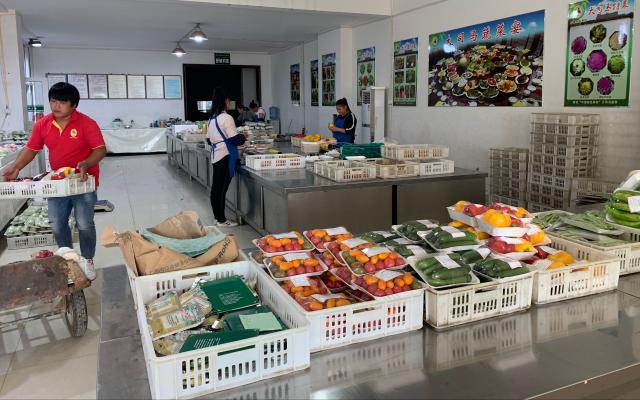
Workers are packing vegetables. Beijing News reporter Yang Yijing photo
"Generally, we have 9 varieties of vegetables in a box, which are matched according to the season, color and eating method, and will also be matched according to the needs of guests." The staff of the sales department told the reporter that the staff in the cooperative are basically villagers in the village, welcoming customers who come to the village to eat and buy food every day.
At present, there is also a special product in Simazhuang Village, which is a vegetable feast. The vegetable feast here has the reputation of "seven colors, different fruits and eighty counties, and a table of meals is spread all over three or five countries", which is famous for its color and nutrition. Buy fresh vegetables and experience the fun of picking. In Simazhuang Village, agricultural leisure tourism is very colorful.
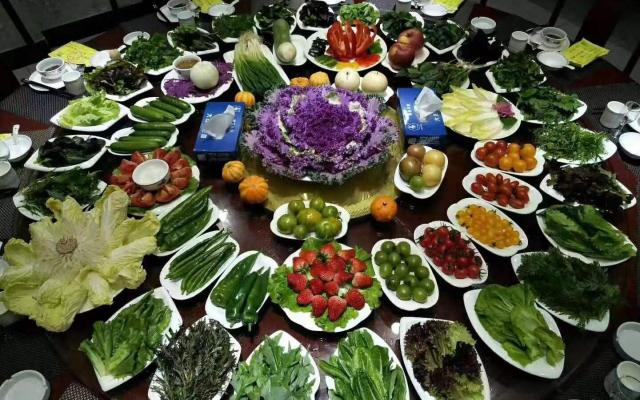
A major feature of Sima Zhuang village is the vegetable feast. Beijing News reporter Yang Yijing photo
Over the years, Agricultural University has introduced new varieties from all over the country and even from all over the world to the village. "Many varieties are not even available in large supermarkets. Many friends from Tianjin go to Simazhuang Village to buy vegetables on time, and they come all the way because the vegetables here are rich in variety and delicious." Ren Huazhong said. At present, Sima Agricultural Park can sell 300,000 boxes of vegetables every year and receive tens of thousands of tourists for meals, with an annual turnover of more than 60 million and a net profit of more than 20 million.
More visitors have not only brought economic benefits to the villagers, but also brought changes in their ideology. Professor Ren Huazhong, from China Agricultural University, came to Simazhuang Village for investigation and investigation for the first time in 2011, eight years ago.
In recent years, he has seen the changes in Simazhuang Village. Through land circulation and environmental improvement, the appearance of the village has changed, the house is clean and tidy, and the path between villages has hardened. Compared with the changes in hardware facilities, the changes in villagers’ ideology are more prominent. "In recent years, more and more outsiders have come to visit Simazhuang Village, and the people in the village have seen more. The villagers are not only more enthusiastic, but also the overall quality is constantly improving."
Mechanized planting to solve labor shortage
At present, Agricultural University has solved the problem of unsustainable supply of agricultural products to the village. "Vegetable production is limited by many environmental conditions. For example, some people come to eat in March and think it tastes good, but when they come back in July, they find that there are no vegetables in the summer. The unsustainable supply of agricultural products will also affect the consumer experience." Ren Huazhong said that the school has provided many new varieties for Sima Zhuang village, which can resist cold and drought and ensure that vegetables are produced all year round. It is worth mentioning that, compared with the varieties provided by Agricultural University to other vegetable bases, Ren Huazhong said that most of the varieties selected by cooperatives are novel, delicious but relatively low in yield. "They prefer to develop some tastes that customers prefer, not pursuing yield, but only caring about quality."
Persisting in innovation, having a sense of crisis and doing something different are the keys for Sima Zhuang village to maintain its characteristic development for many years, but difficulties still exist. "It is actually quite difficult to engage in agriculture. Basically, it is always difficult." In Li Zhibin’s view, at present, Sima Agricultural Park has several advantages compared with other vegetable production bases. "We have a long production time and a large scale, and have the name of a well-known trademark in China. We have accumulated some experience for so many years, and there are still many fixed customers, which are better than ordinary parks in operation."
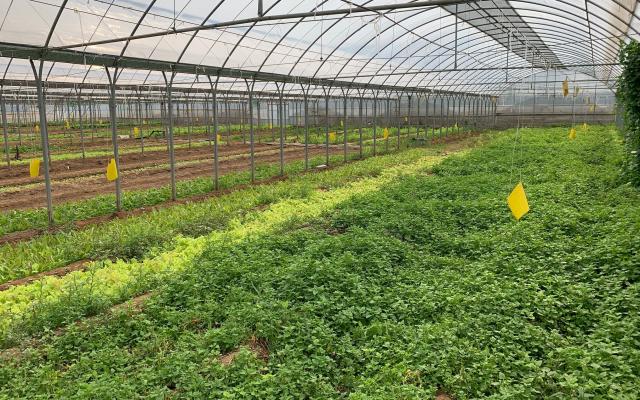
Simazhuang village vegetable garden. Beijing News reporter Yang Yijing photo
But even though the scale of the cooperative is already very large, it still faces many tests, and the agricultural problems need to be further solved. Li Zhibin said that the impact of natural disasters on agriculture is hard to change. "The most immediate example is that this season is the season when jujube is listed, and it is afraid of strong winds and rain. One rain is fine. After two rains, jujube cracks and becomes’ cracked jujube’."
There is another problem, that is, the staff in the agricultural park are aging, and there are few young people. "Our staff are all under 60 years old, but in fact, there are very few slightly younger people under 45 years old. It is hard to work in agriculture, and young people are unwilling to participate. It is very difficult to hire people now." Li Zhibin said that at present, cooperatives have begun to try to promote mechanized production, which is also the next development direction of the village.
Beijing News reporter Yang Yijing
Editor Zhang Shujing proofreads Wu Xingfa.
Reporting/feedback